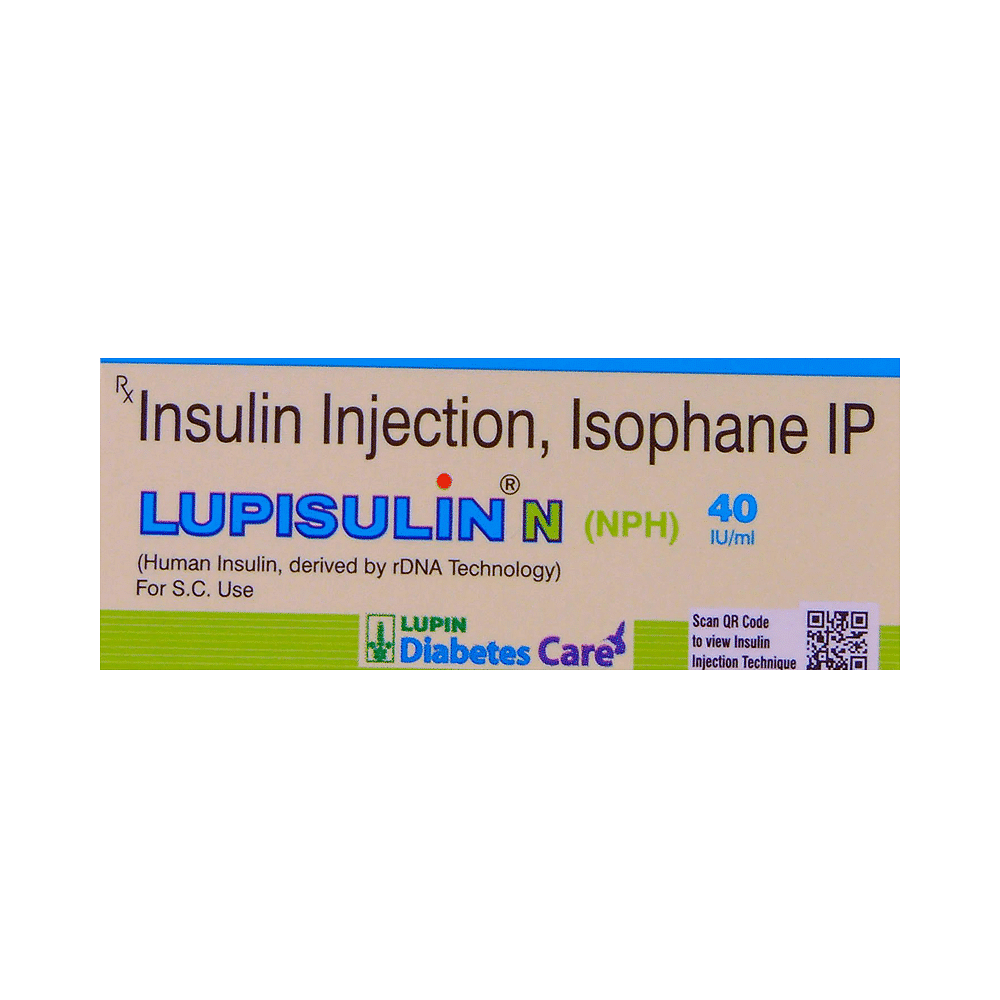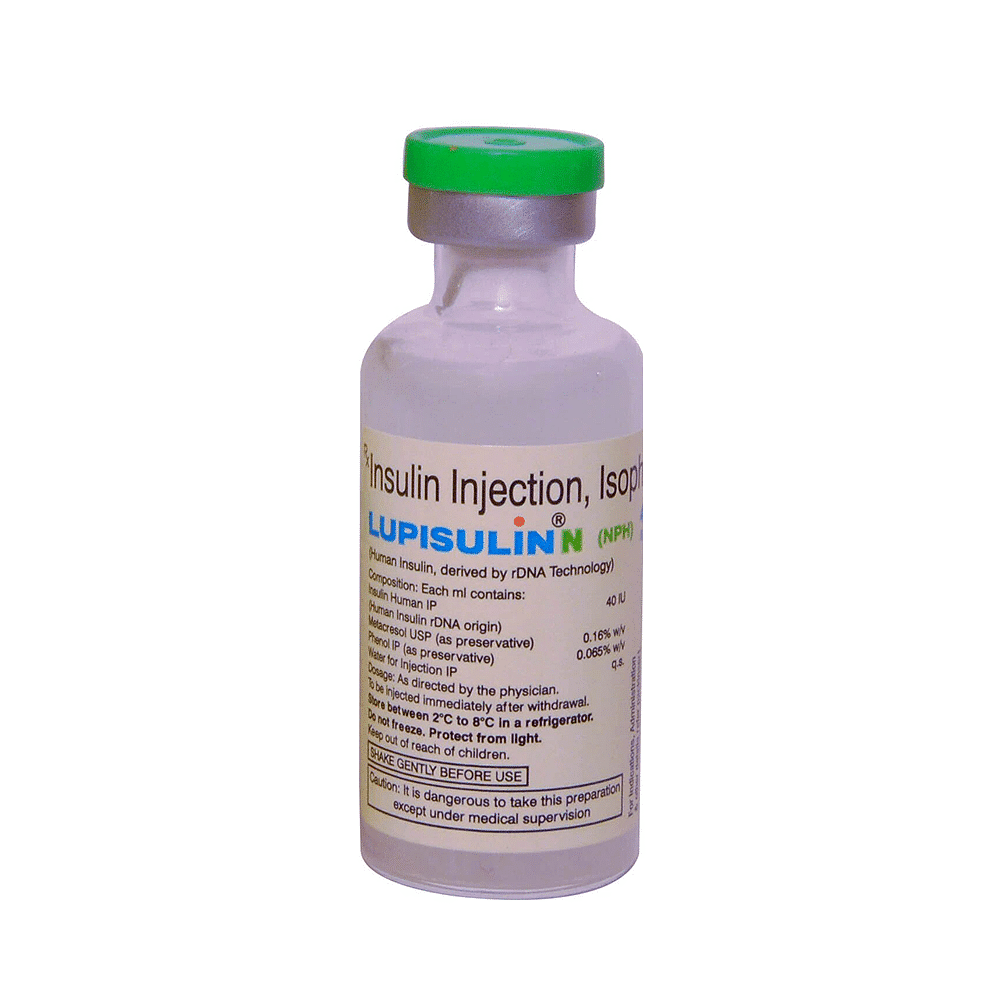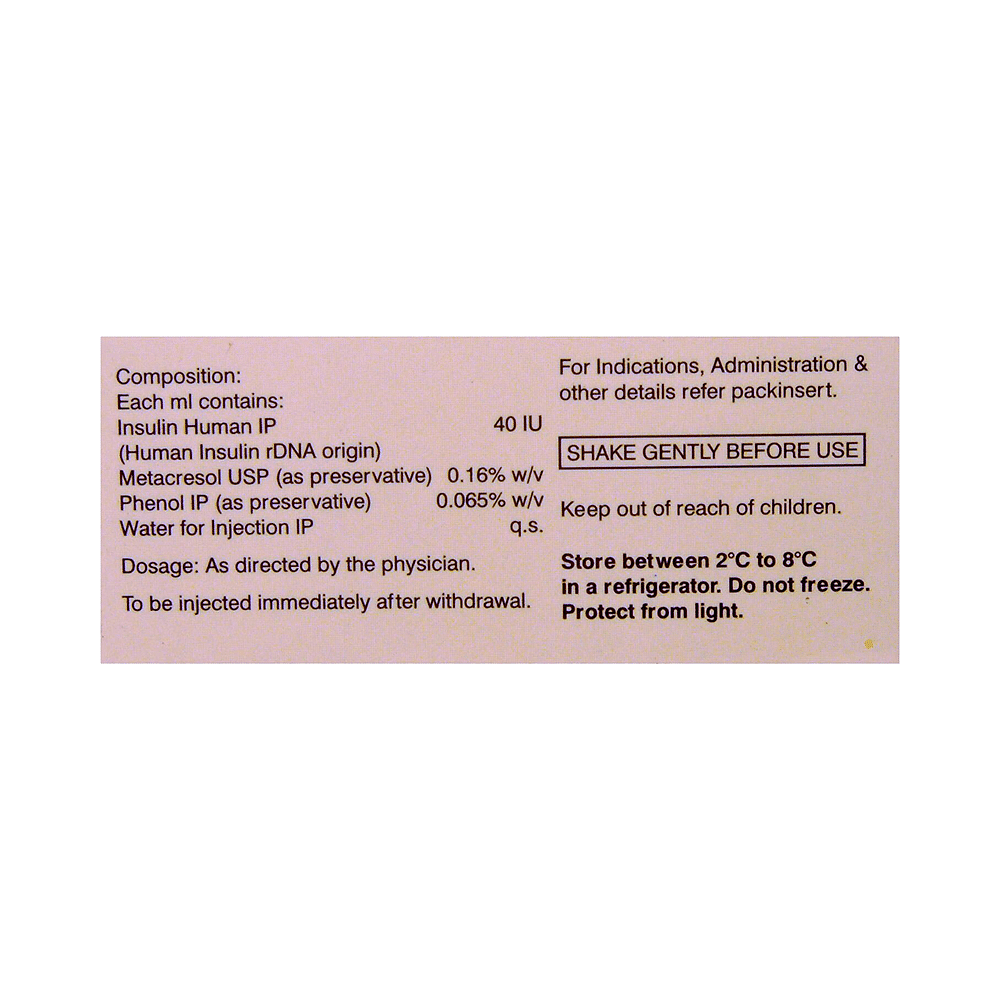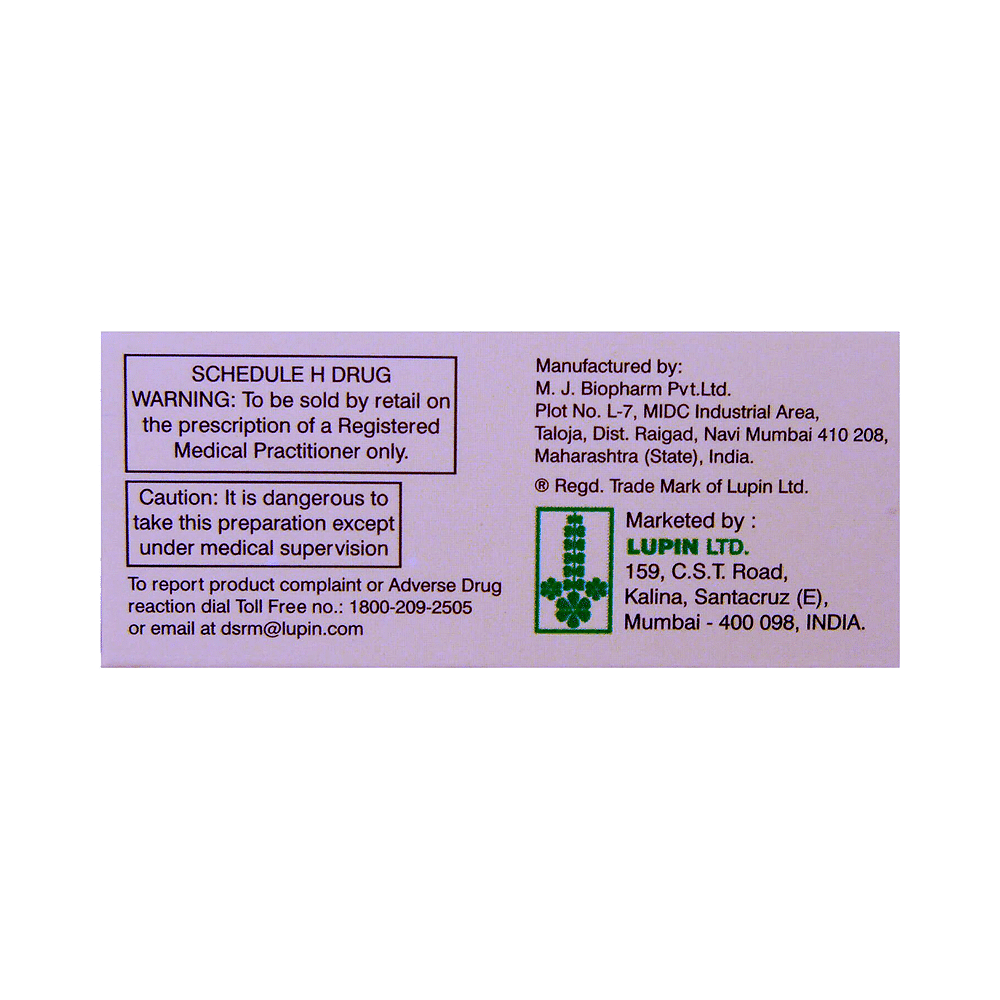



Lupisulin N 40IU/ml Injection
Manufacturer
Lupin Ltd
Salt Composition
Insulin Isophane (40IU)
Key Information
Short Description
Lupisulin N 40IU/ml Injection is used to improve blood sugar control in adults and children with type 1 and type 2 diabetes mellitus.
Dosage Form
Solution for Injection
Introduction
Lupisulin N 40IU/ml Injection is often prescribed along with short-acting insulin or other oral diabetes medicines. Your doctor or nurse will teach you the correct way of injecting it under the skin. Don’t stop taking it unless your doctor tells you to. It is only part of a treatment program that should also include a healthy diet, regular exercise, and weight reduction as advised by your doctor.
Directions for Use
Your doctor or nurse will guide you how to use this medicine.
How it works
Lupisulin N 40IU/ml Injection is an intermediate-acting insulin that starts working in 1-2 hours after injection. It works similar to the insulin that is produced by the body. Insulin facilitates reuptake of sugar in muscle and fat cells and also suppresses the production of sugar in the liver. This helps to lower the blood sugar levels in diabetes mellitus.
Quick Tips
Hypoglycemia (low blood sugar level) is a common side effect. Hence regular monitoring of blood sugar levels is required while taking this medicine. Injection below the skin of the abdomen results in faster absorption than other injection sites. Injection sites must be rotated to prevent hard lumps from developing at one site. Opened vials/cartridges are good at room temperature for up to 4 weeks while unopened vials must be placed in the refrigerator (2°C–8°C). Your doctor or nurse will guide you how to use this medicine.
Frequently asked questions
How does biphasic isophane insulin work?
Biphasic isophane insulin is an intermediate-acting insulin analogue that works by replacing the body's natural production of insulin. It helps to lower blood sugar levels by facilitating the uptake of glucose from the bloodstream into cells, where it can be used for energy. This process also prevents the liver from producing excess glucose.
What is Lupisulin N 40IU/ml Injection? How is it made?
Lupisulin N 40 IU/ml Injection is a sterile, aqueous solution of insulin aspart produced using recombinant DNA technology. It contains other constituents such as glycerin, phenol, metacresol, zinc, and sodium chloride.
Can Lupisulin N 40IU/ml Injection cause hypoglycemia? How do I prevent it?
Yes, the most common side effect of Lupisulin N 40 IU/ml Injection is hypoglycemia. To prevent hypoglycemia, maintain consistent meal times and amounts, take snacks as needed if over-exercising, regularly monitor blood sugar levels, carry glucose tablets or honey/juice, and adhere to prescribed medication regimens.
What are the other side effects of Lupisulin N 40IU/ml Injection? How to prevent them?
Common side effects include injection site reactions like redness, itching, pain, and swelling. These symptoms usually resolve on their own. Rarely, lipodystrophy (abnormal fat tissue changes due to repeated insulin injections in the same area) can occur. To minimize this risk, rotate insulin injection or infusion sites within the same region.
How should Lupisulin N 40IU/ml Injection be used?
Lupisulin N 40 IU/ml Injection is administered subcutaneously. Rotate between typical injection sites, such as abdomen, buttocks, upper legs, or upper arms. Avoid injecting into a muscle or vein. Move to a new injection site every week or two and use the same area for at least a week to avoid blood sugar variations.
Is Lupisulin N 40IU/ml Injection given as an injection into a vein (intravenous)?
In specific situations like diabetic ketoacidosis, severe hyperglycemia, or hospital settings, Lupisulin N 40 IU/ml Injection may be administered intravenously under medical supervision.
Is Lupisulin N 40IU/ml Injection safe to use in pregnancy?
Yes, Lupisulin N 40 IU/ml Injection is safe for pregnant women if prescribed by a doctor. Inform your doctor of any pregnancy or breastfeeding plans and follow their instructions to monitor blood sugar levels regularly.
When does the dosage of Lupisulin N 40IU/ml Injection need to be changed?
Adjust your dose with your doctor if you experience weight gain or loss, increased stress, illness, changes in diet, exercise regime, or are taking other medications. Be vigilant about observing side effects during initial use and consult your doctor for dose modifications.


